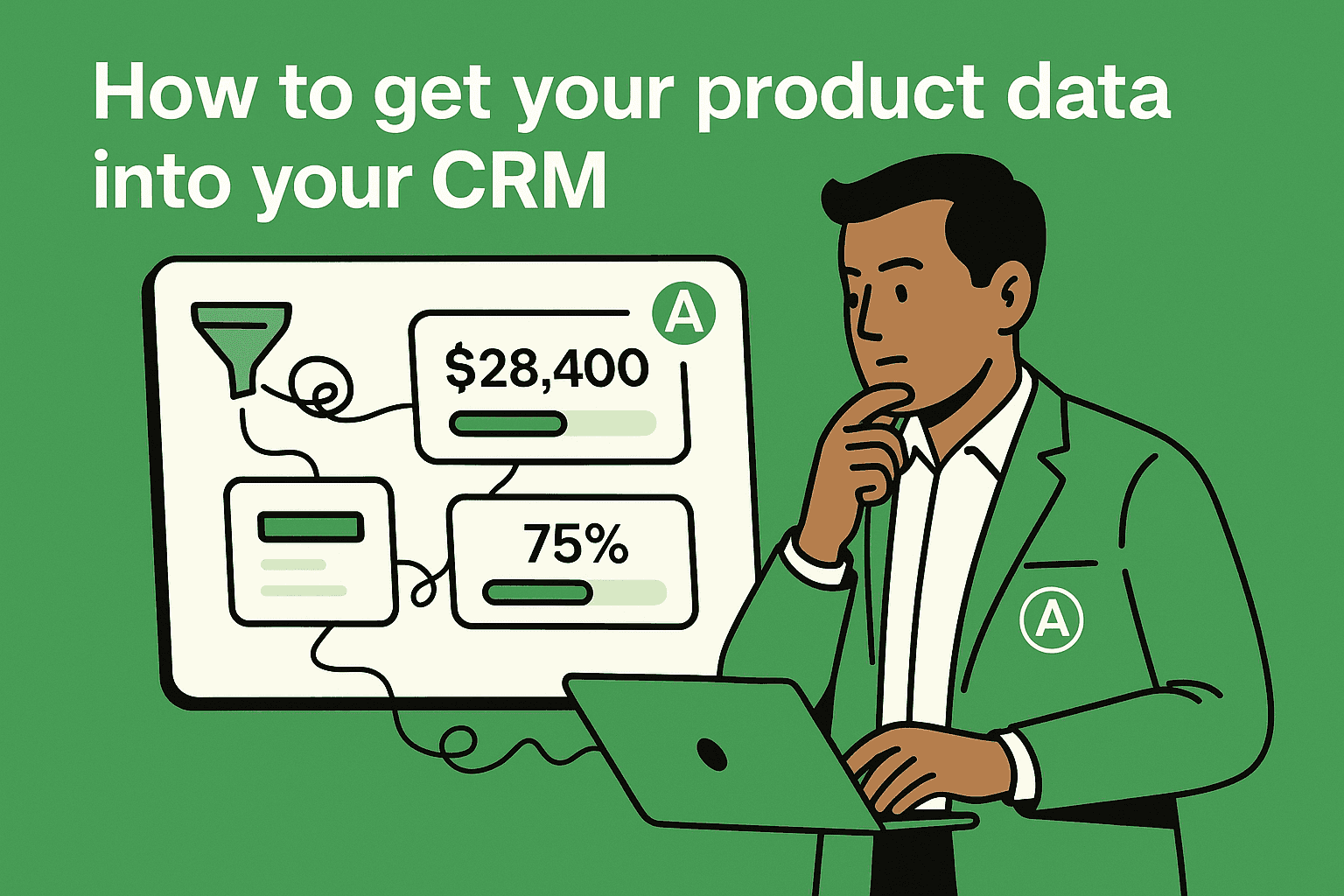Getting product data into your CRM is one of the biggest operational challenges for a product-led SaaS business. It may not sound hard on paper, but if you have tried, you know how frustrating it can be. In this post, we explain why it is challenging and outline a system to get product data into your CRM.
Why do you need product data in your CRM?
Product engagement data is the lifeblood of every SaaS business. The entire business model depends on whether users are engaging with the product. If trial users do not engage, they will not buy. If existing customers stop engaging, they may cancel or not expand their account value.
Your sales, customer success, and product teams need to know how users interact with your product. Without this data in your CRM, these teams are working in the dark.
But why is it so hard to get product data into a CRM?
It is hard to get product data into a CRM because CRMs were not built for this type of data. Their systems and data structures are not designed to process product engagement information. Sure, most systems allow you to send product data via an API, but they may charge extra and lack the flexibility to manipulate the data in a useful way.
CRM systems work with properties on Contact and Company records. These can be simple details like demographics or more specific details about the user's status with your product. They are the main elements used for segmentation, lists, and workflows. But they are not set up for product events. You cannot easily create behavioural segments based on product events as you would in analytics tools.
The key is converting product data into simple traits on Contact and Company records.
How to translate your product data so that you can use it in your CRM
If you are a product-led business, CRMs were not built with your engagement data in mind. You need a system that sits between your product and your CRM. This can be an internal system or a third-party solution like Accoil.
If you plan to build a translation engine for your product data, consider these suggestions:
Everything needs to be a property
As you build your engine, ensure that any data sent to your CRM is recorded as a property on a Contact or Company record. Do not simply stream a filtered list of product events.
Capture both user AND account data
User-level data only tells half the story. SaaS businesses operate at the account level, so your engine must record data for both users and accounts.
Create calculated metrics
To pass product data as properties, your engine must calculate a few simple engagement metrics. Consider these metrics:
- Engagement score (normalized): A credit-like score for your users and accounts on a scale of 0 to 100.
- Engagement trend: The change in engagement over time. This shows if an account's score is dropping or rising.
- Activation rate: A key metric to determine which trial accounts to reach out to.
- Last active date: Which can be converted to days since last active.
- Created at date: Useful for calculating the tenure of a user or account.
- Adoption rate: The percentage of key features used in a given time frame.
- Frequency: How often users engage with the product.
- Number of active users: (for accounts).
Segmentation
Your engine should allow key engagement metrics and segments to be recorded as properties in your CRM. This makes it easy for your teams to create lists and trigger workflows.
Connect to and update the CRM
Finally, build a system that pushes these calculated metrics and segmentation data to your CRM. Key points to consider:
- Identity matching for Contacts and Companies. Match user IDs to CRM contacts using email or a unique account ID.
- Frequency. Decide how often you update your CRM data. More than once per day is recommended, but real-time is not necessary.
- What data to update. Update only those records whose metrics have changed to avoid unnecessary API calls.
Building a system like this is a big task – and that is why we built Accoil.
How we built all this into Accoil
Accoil is built as a translation engine for product data. Here is how our system works:
Built to process product data. Accoil is designed like an analytics tool to handle product engagement data – not like a traditional CRM.
User and account based by design. From day one, we have tracked data at both the user and account level. This is essential for any SaaS business.
Calculated metrics. This is where Accoil shines. We calculate important metrics that become traits on your user and account records. Our calculated metrics include:
- Engagement score: A simple score between 0 and 100 based on product usage.
- Engagement trends: How the engagement score changes over time.
- Activation rates: A metric that shows how far an account is toward full activation.
- Adoption rates: The percentage of key product features used over a defined period.
- Frequency: A measure of how often the product is used.
- Last active: The timestamp of the last activity, converted to days since last active.
- Tenure: The length of time a user or account has been with the product.
Segmentation. Our system allows you to create clear segments based on any calculated metric or trait. These segments are then recorded as properties so your CRM can use them.
Connection to other tools. Accoil is built to get data into the tools in your stack, especially CRMs. All calculated metrics and segments are passed as traits on Contact and Company records in your CRM for further analysis and action.
Accoil transforms colossal product data into a few simple, easy-to-understand metrics, so you always know how users are engaging with your product.



